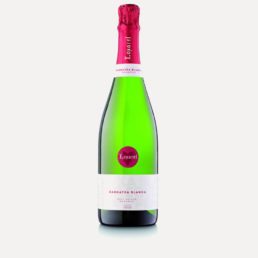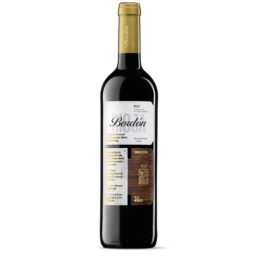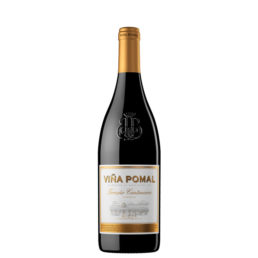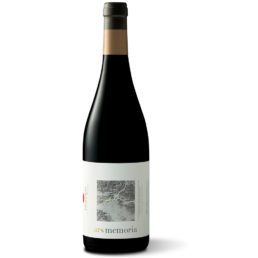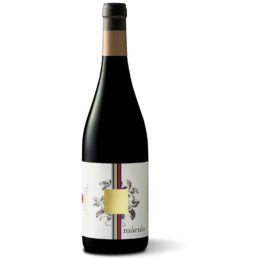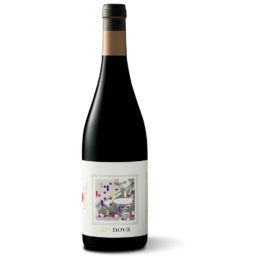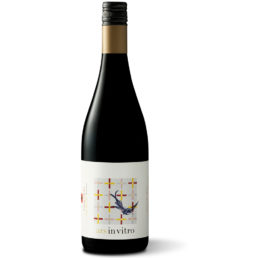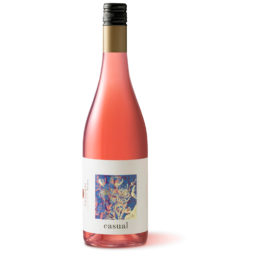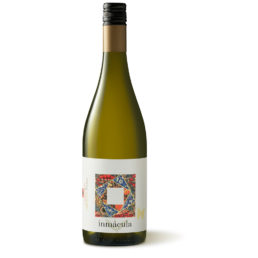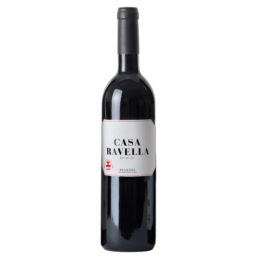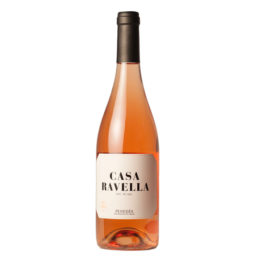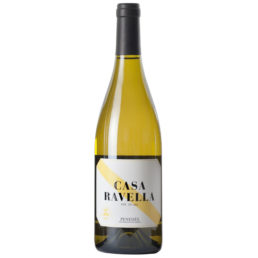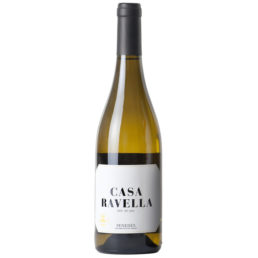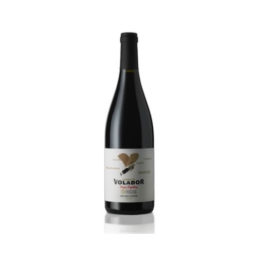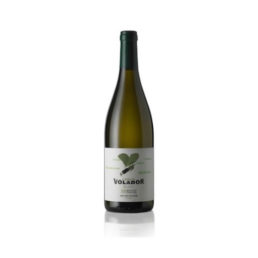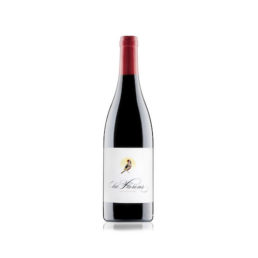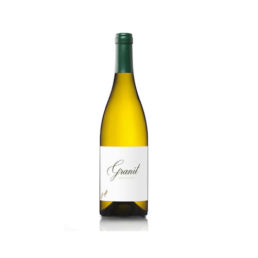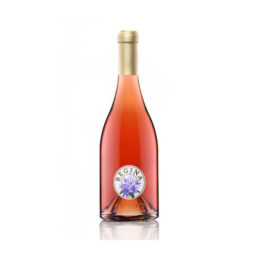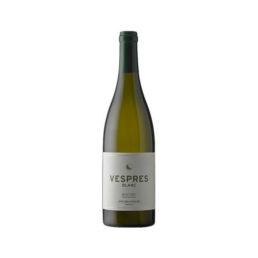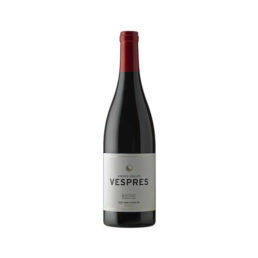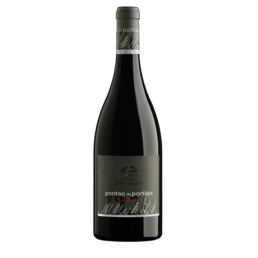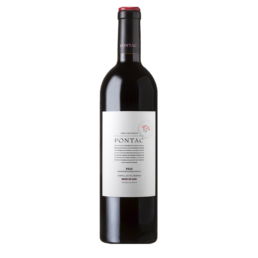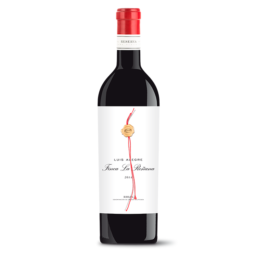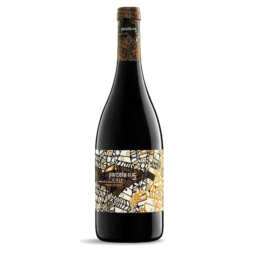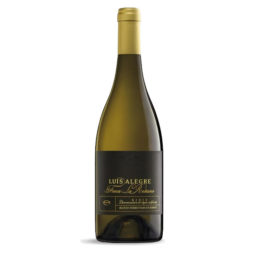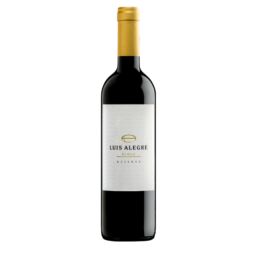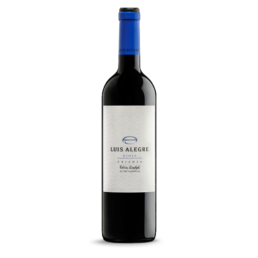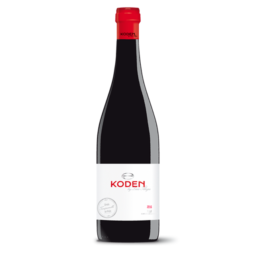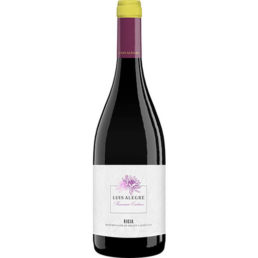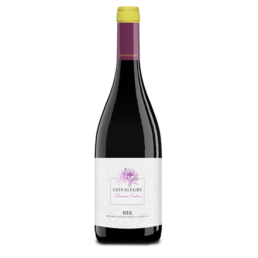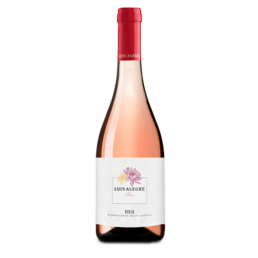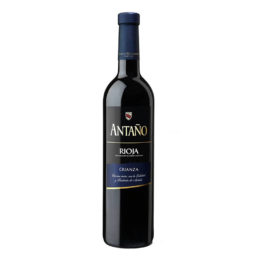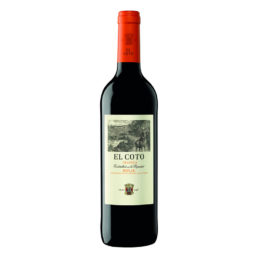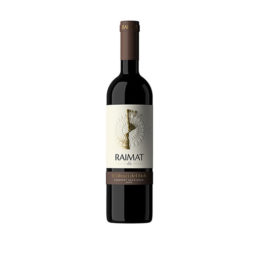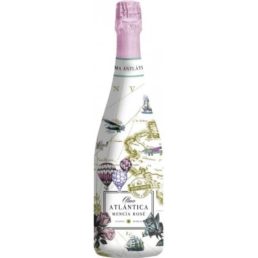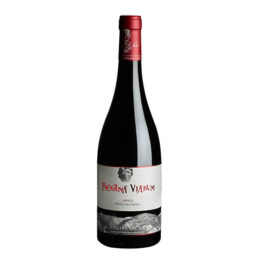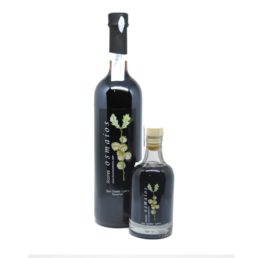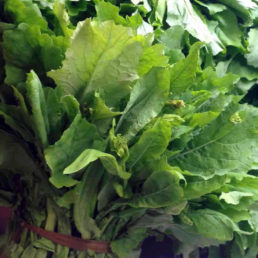Spain
-
Red wine Rioja – Bordón Gran Reserva
Great Bacchus of Gold to Bordón Gran Reserva 2009 BORDÓN Gran Reserva 2009 he has been awarded with the Great Gold Medal in the international Competition Bacchus, after a blind tasting during four days of 1.650 references national and international. A wine that also has a Large Gold Medal to the World of Tempranillo. Vineyards Made with Tempranillo, Graciano and Mazuelo from vineyards from the 3 sub-zones of Rioja with different types of soils: Rioja Alta, Rioja Alavesa and Rioja Eastern slopes of the Sierra de la demanda, with north facing. Elaboration The selection of the fruit, the processing is based on the de-stemming of the bunches and soft pressing of the grapes to make the alcoholic fermentation and the malolactic fermentation. Foster The wine is aged in new barrels and second year of white oak (Ohio) medium toast and French oak for 30 months, with a racking every 6 months to facilitate the natural clarification. Subsequently remains in the bottle 36 months for fine tuning -
Viña Pomal Centenario Reserva
Viña Pomal Centenario was created to commemorate the 100 years of the foundation of the company Bodegas Bilbaínas. A red wine that sums up a century of the history of wine in la rioja. If with the add 2011 Viña Pomal Centenario Reserva won a Gold Medal at Mundus Vini, the harvest 2012 maintains the quality and the elegance that so much fame have been given to one of the riojas essential. DEVELOPMENT (VINIFICATION)Viña Pomal Centenario is made from a selection of parcels from our vineyards D. O. Ca. Rioja. Fermentation 28 ° C and a maceration total 3 weeks. Are breeding during 18 months in american oak barrels, a 20% new. At this time, the rackings allow us to go into clearing by natural decantation the wine. After its passage through the barrel, this red wine remains two years in bottle before release onto the market.VINEYARD (VITICULTURE)The finca Viña Pomal is made by 90 hectares of vineyard D. O. Ca. Rioja. Nestled in the municipality of Haro and less than 2 kilometres of the winery, located in one of the most beautiful areas of the city; through them we can enjoy the passage of the river Ebro through the conchas of Haro. Combine on our farm different ecosystems in function of the variability of the soil and the sun exposure, what that translates to in a comprehensive selection of homogeneous areas. The viticulture is applied arises from a mixture between traditional rioja and the precision, resulting in a growing commitment to innovation in order to protect the nature, always under the parameters of maximum quality.PAIRINGIdeal to accompany dishes such as rice with meat, grilled vegetables, cold cuts and cured cheeses. -
Red wine Tandem – Ars Memory
Ars Memory "Our loved ones and partners are very important to us and will always be in our memory. Let us Enrique Rodriguez on February 2006 and Jose Mari Friar father in October 2011. Without them we would not be where we are nor would we be what we are today. You will always be in our memory and our work tries to honor them in everything we do. The wine ars memory is the best tribute that we can imagine". Winemaking Prefermentación cold. Fermentation at a controlled temperature of 30 – 31 ºC with pistons for pressing, without pumps. Malolactic fermentation in French oak barrels 300 liters. -
Red wine Tandem – Spot Great
Macula In Latin, stain or sin, tâche in French, which we interpret as memories, or sensations indelible. Macula is the small central part of the retina that lets us see with clarity. Macula is a wine powerful, concentrate, male and long. Winemaking The grapes enter the winery by gravity. Cold maceration pre-fermentation at a controlled temperature of 30 – 32 ºC. Fermentamos without pumps, we do pigeage or immersion of the hat (pigeage) with the objective of obtaining fine tannins and elegant. The wines are trasiegan by gravity to depóstios of concrete underground that will complete the fermentation malolácica. Wines finished, it is stored in concrete during a mínimop of 24 months cleanses and completing a clarification and stabilization of natural. Bottled by gravity with minimal filtration. Aging Minimum 24 months in concrete and 26 months in French oak barrels 300 liters Awards 2004 - Gold medal-Sommellier Wine Awards, 91 points Mike Potashnik, 91 points Richard Jennings, 91 points Guide Proensa, 18/20 John Radford Wine Wire, Guide Phaneuf 4 stars 2005 - Gold Medal Prague Wine Trophy 2013, Champion 2014 2006 - 91 puntos ROBERT PARKER Wine Advocate, Gold Medal Mundus Vini 2015, 91 points STEPHEN TANZER 2010 - 91 puntos Vinous Antonio Galloni -
Red wine Tandem – Macula
Macula In Latin, stain or sin, tâche in French, which we interpret as memories, or sensations indelible. Macula is the small central part of the retina that lets us see with clarity. Macula is a wine powerful, concentrate, male and long. Winemaking The grapes enter the winery by gravity. Cold maceration pre-fermentation at a controlled temperature of 30 – 32 ºC. Fermentamos without pumps, we do pigeage or immersion of the hat (pigeage) with the objective of obtaining fine tannins and elegant. The wines are trasiegan by gravity to depóstios of concrete underground that will complete the fermentation malolácica. Wines finished, it is stored in concrete during a mínimop of 24 months cleanses and completing a clarification and stabilization of natural. Bottled by gravity with minimal filtration. Aging Minimum 24 months in concrete and 26 months in French oak barrels 300 liters Awards 2004 - Gold medal-Sommellier Wine Awards, 91 points Mike Potashnik, 91 points Richard Jennings, 91 points Guide Proensa, 18/20 John Radford Wine Wire, Guide Phaneuf 4 stars 2005 - Gold Medal Prague Wine Trophy 2013, Champion 2014 2006 - 91 puntos ROBERT PARKER Wine Advocate, Gold Medal Mundus Vini 2015, 91 points STEPHEN TANZER 2010 - 91 puntos Vinous Antonio Galloni -
Red wine Tandem – Ars Nova Magnum
Ars Nova New art in Latin, very consistent with the philosophy of this wine. Ars Nova is a musical movement of the FOURTEENTH Century which marked the arrival of the volume to the music. Until that time, the music was flat, monochrome. This new way of making music was more complex, marked by harmony and rhythm. It was the birth of polyphony. The music is composed from this time was called the ars nova, and the previous music is called the ars antiqua. It has been compared with the arrival of the perspective to the painting which occurred in the same time. Ars Nova is an elegant wine, female, multi-layer, a wine for reflection and enjoyment. Winemaking Temperature of fermentation 30 ºC extraction slow with pigeage, we do not use pumps in fermentation. Racking by gravity to concrete. Malolactic fermentation and natural clarification by decanting into concrete tanks. Not stabilized in cold or clarifies. Aging Minimum 24 months in concrete tanks 9 months in French oak barrels 300 liters. Press 2003 - Chosen in a blind tasting for the business class of KLM 2005 - 17/20 John Radford Wine Wire, 92 pts Ray Jordan West Weekend Magazine, Perth, GOLD Sommelier Wine Awards 2008 - 90 points STEPHEN TANZER International Wine Cellar 2010 - GOLD Medal MUNDUS VINI 2015, 91 points STEPHEN TANZER 2012 - 91 puntos Vinous Antonio Galloni -
Red wine Tandem – Ars Nova
Ars Nova New art in Latin, very consistent with the philosophy of this wine. Ars Nova is a musical movement of the FOURTEENTH Century which marked the arrival of the volume to the music. Until that time, the music was flat, monochrome. This new way of making music was more complex, marked by harmony and rhythm. It was the birth of polyphony. The music is composed from this time was called the ars nova, and the previous music is called the ars antiqua. It has been compared with the arrival of the perspective to the painting which occurred in the same time. Ars Nova is an elegant wine, female, multi-layer, a wine for reflection and enjoyment. Winemaking Temperature of fermentation 30 ºC extraction slow with pigeage, we do not use pumps in fermentation. Racking by gravity to concrete. Malolactic fermentation and natural clarification by decanting into concrete tanks. Not stabilized in cold or clarifies. Aging Minimum 24 months in concrete tanks 9 months in French oak barrels 300 liters. Press 2003 - Chosen in a blind tasting for the business class of KLM 2005 - 17/20 John Radford Wine Wire, 92 pts Ray Jordan West Weekend Magazine, Perth, GOLD Sommelier Wine Awards 2008 - 90 points STEPHEN TANZER International Wine Cellar 2010 - GOLD Medal MUNDUS VINI 2015, 91 points STEPHEN TANZER 2012 - 91 puntos Vinous Antonio Galloni -
Red wine Tandem – Ars In Vitro
Ars in vitro In Latin, art in glass or in bottle. In this wine Tandem wants to express the freshness and power of its grapes from cold climate of the Valley of Yerri without the presence of wood. Cool, fun, for any occasion and nice. Winemaking Cold pre-fermentation maceration. Fermentation 25-27 ºC in stainless steel without pumps, with immersion of the cap or pigeage. The wine is decanted by gravity to the concrete tanks on the lower floor of the winery of development where they perform the malolactic fermentation and clarify naturally by settling. Bottled by gravity with a filtration minimum. Aging Minimum 24 months in concrete tanks. Does not pass through wood. Press 2011 - 89 points Stephen Tanzer International Wine Cellar, 88 points Robert Parker's Wine Advocate 2012 - 90 puntos Stephen Tanzer 2013 - The Wine Merchant Top 100, 91 puntos Vinous Antonio Galloni -
Rosé wine Tandem – Casual
Casual Of casualis in Latin, accidentally, luckily. Winemaking Once destemmed, the grapes macerated for seven hours in a stainless steel tank. Sangramos the must yolk, which ferments slowly at a temperature of 16 ºC -
White wine Tandem – Inmácula
Inmácula In Latin, without stain. A different white fermented in French oak and kept on its fine lees for three months to gain texture and complexity. Winemaking After you remove the stems, the grapes macerated whole for a few hours in the tank. Sangramos the first wort and filled the barrels 300 liter French oak where it ferments at a temperature of 17-18 ºC Once the fermentation terminated, we begin with the bâtonnage journal, the process in which we mix the wine with the lees in order to get more volume in the mouth. Press harvest 2013 - 90 points Wine&Spirits magazine, 90 points STEPHEN TANZER, 90 points ROBERT PARKER harvest 2014 - 90 points STEPHEN TANZER 91 points PEÑIN Guide -
Red wine Casa Ravella – Casa Ravella Tinto Crianza
SOURCE Alt Penedès. Penedès denomination of Origin. Own vineyards of our farm House Ravella ('ordal). VINIFICATION AND AGEING Only own harvest. Manual harvest with selection of the grapes in own vineyard. De-stemming, total. Maceration and fermentation in French oak barrels open. Crianza of twelve months in French oak barrels. -
Rosé wine- Casa Ravella Rosado (ecological)
SOURCE Alt Penedès. Penedès denomination of Origin. Own vineyards of our farm House Ravella ('ordal). DEVELOPMENT Only crops own. Manual harvest with selection of the grapes in own vineyard. De-stemming, total. After a short maceration, fermented in stainless steel tanks with temperature control. -
White Wine Crianza White House Ravella (ecological)
SOURCE Alt Penedès. Penedès denomination of Origin. Own vineyards of our farm House Ravella ('ordal). VINIFICATION AND AGEING Only own harvest. Manual harvest with selection of the grapes in own vineyard. After you get the “flower must” proceed to ferment in oak barrels, where later will be a minimum of six months on its own lees. -
White wine Young White House Ravella (ecological)
SOURCE Alt Penedès. Penedès denomination of Origin. Own vineyards of our farms Montargull and The Doghouse (St. Sebastià dels Gorgs) and Home Ravella ('ordal). DEVELOPMENT Only crops own. Manual harvest with selection of the grapes in own vineyard. To obtain the “mosto flor” in pneumatic press. The clarification of the wort has been carried out using a decanting static. The fermentation is carried out by controlling the temperature, in stainless steel tanks. -
Red wine Josep Grau – L’ Effect Flying Vineyards Unique Magnum
THE VINEYARD AND VITICULTURE: Grapes that come from the farms surrounding the winery in Marca and farms in the municipality of Serra d Almos. The age of the vines is between the 15 and the 35 years old. Organic farming. The work is carried out 100% manually. VINIFICATION: Vintage in boxes 10 kg and immediate transportation to the winery, where you enter, keeping a part from the stems, in deposits of cement 17.700 liters. Indigenous yeasts and without added. Fermentation at low temperature to protect the fruit. Aging in the same deposits of cement for a period of 6 months. -
Red wine Josep Grau – L’ Efecte Flying Vinyes Singulars (50 cl)
THE VINEYARD AND VITICULTURE: Grapes that come from the farms surrounding the winery in Marca and farms in the municipality of Serra d Almos. The age of the vines is between the 15 and the 35 years old. Organic farming. The work is carried out 100% manually. VINIFICATION: Vintage in boxes 10 kg and immediate transportation to the winery, where you enter, keeping a part from the stems, in deposits of cement 17.700 liters. Indigenous yeasts and without added. Fermentation at low temperature to protect the fruit. Aging in the same deposits of cement for a period of 6 months. -
Red wine Josep Grau – L’ Efecte Flying Vinyes Singulars 2018
THE VINEYARD AND VITICULTURE: Grapes that come from the farms surrounding the winery in Marca and farms in the municipality of Serra d Almos. The age of the vines is between the 15 and the 35 years old. Organic farming. The work is carried out 100% manually. VINIFICATION: Vintage in boxes 10 kg and immediate transportation to the winery, where you enter, keeping a part from the stems, in deposits of cement 17.700 liters. Indigenous yeasts and without added. Fermentation at low temperature to protect the fruit. Aging in the same deposits of cement for a period of 6 months. -
Rosé wine Josep Grau – L’ Efecte Volador Rosat
Viticulture and Vineyards The grapes for this wine comes from an estate of Marca (The Priorat) with clayey soils and decomposed granite. Vines 5 years of age. Organic cultivation. The work is carried out 100% manually. Winemaking The grapes are harvest and pressed slowly in a pneumatic press for a period of 6 hours to perform a extraction slow of all the aromatic potential of the variety. Ferments for 15 days in stainless steel tanks, where it will remain after 5 more months to finish maturing. -
White wine Josep Grau – L’ Efecte Flying Blanc 2019
Viticulture and Vineyards The grapes for this wine comes from an estate of Marca (The Priorat) with clayey soils and decomposed granite. Vines 5 years of age. Organic cultivation. The work is carried out 100% manually. Winemaking The grapes are harvest and pressed slowly in a pneumatic press for a period of 6 hours to perform a extraction slow of all the aromatic potential of the variety. Ferments for 15 days in stainless steel tanks, where it will remain after 5 more months to finish maturing. -
Red wine Josep Grau – The Florens 2017
THE VINEYARD AND VITICULTURE: Comes from an estate with 3 different ages of plantation 40, 70 and 100 years, in the municipality of Marca (The Priorat). Soils of clayey composition. The Florens is a selection of grapes from the plot of 100 years. Organic cultivation. All the work is carried out 100% manually. Vintage in boxes 10 Kg. VINIFICATION: Indigenous yeasts and fermentation in tanks of cement. aging foudres round 2.500 litre capacity, for a period of 14 months. -
White wine Josep Grau – Granit 2018
Viticulture and Vineyards Vineyard nestled in the terraces at Starting I Eat, at a height of 450 metres and very exposed to the wind coming from the sea. Soil 100% decomposed granite, with very little water retention and are rich in minerals. Organic cultivation. All the work is carried out manually. Vintage in boxes 10 kg. Winemaking Pressed during 7 hours. Fermentation and aging in foudres of oak, austrian and German 2.000 litre capacity. Aging during 9 months with the lees. -
Rosé wine Josep Grau – Regina
Viticulture and Vineyards Comes from 7 terraced terraces of Finca Partida Les Comes, very steep. The top has slate floors and the bottom is clayey. organic viticulture. All the work is carried out 100% manually. Winemaking Pressing 7 hours. Temperature controlled fermentation in foudre of 2.000 litre capacity. Parenting 7 months in the same foudre. Bottled and labeled by hand in the original bottle of the first wines of Burgundy with asymmetrical shapes. Pairing very gastronomic. You can pair with any dish. -
White wine Josep Grau – Vespres white
THE VINEYARD AND VITICULTURE: Farm 6 has. in the municipality of Marca (The Priorat) of 15 years of age, in soils of decomposed granite. Organic cultivation. All the work is carried out 100% manually. Vintage in boxes 10 Kg. VINIFICATION: Indigenous yeast. Pressing 6 hours and spontaneous fermentation foudres of 2.000 litre capacity. Parenting during 5 months on its lees in the same foudre fermentation. -
Red wine Josep Grau – Quote From Old Vines Magnum 2016
THE VINEYARD AND VITICULTURE: Farms of between 50 and 70 years of the towns of Marçà, Falset and Capçanes. Soils of various compositions, mostly stony, clayey and calcareous. Organic cultivation. All the work is carried out manually. Vintage in boxes 10 kg. VINIFICATION: Indigenous yeasts and fermentation in tanks of cement. aging foudres of 2.000 liter capacity for a period of 9 months. -
Red wine Josep Grau – Vespres Vinyes Velles
THE VINEYARD AND VITICULTURE: Farms of between 50 and 70 years of the towns of Marçà, Falset and Capçanes. Soils of various compositions, mostly stony, clayey and calcareous. Organic cultivation. All the work is carried out manually. Vintage in boxes 10 kg. VINIFICATION: Indigenous yeasts and fermentation in tanks of cement. aging foudres of 2.000 liter capacity for a period of 9 months. -
Red wine Luis Alegre – Pontac of Portiles 2010 / 2012
GREAT WINES FROM SMALL ESTATESGrapes from the vineyard of Finca Payment of Portiles, for almost a century and 1,5 has. Vines planted on a gentle slope, in the best years give a maximum of 4 barrels. Nose boxes 15 kg and strict selection tables. Fermented in 8 bocoyes French oak 600 kg capacity, with individualised temperature control to set the intense aromas that generates this vineyard. Of these eight are selected the two best per vintage and the wine passes to rest. AcknowledgementsProensa 96Tim Atkin 92Wine Advocate/Parker 93Jancis Robinson 17Guide Gourmet 97 -
Red wine Luis Alegre – Pontac 2014
GREAT WINES FROM SMALL ESTATESGrape of the Estate Portiles, planted in 1920. Soil limestone with influence iron, unusual in the area, that brings color, structure, deep aromas and atypical. Vintage manual boxes 15 kg. Selection table. Fermentation in a vat of small capacity. Raised during 21 months in new barrels of French of great quality, made to the “letter” for our winery. Slight clarification, and rest on rack until it reaches its fullness. AcknowledgementsGuide Proensa 2019 : 97 pointsPeñín 92Proensa 98Wine Enthusiast 91Jancis Robinson 17Guide Gourmet 94 -
Finca Rhenish Special Selection Tinto Luis Alegre 2014/2015
GREAT WINES FROM SMALL ESTATESGrapes from the vineyard Finca La Reñana. Their limestone soils provide elegance, high minerality and depth with a high potential to save. Vintage manual boxes 15 kg. Selection table. Raised during 16 months in new oak barrels from the best forests of France with a touch of american oak, that provides structure and aromatic complexity. Rests in bottle a minimum of 18 months. AcknowledgementsGuia Vinos Gourmets 2019: 95 pointsPeñín 91Tim Atkin 90Wine Advocate/Parker 90Jancis Robinson 16.5Gourmets guide 95 -
Red wine Luis Alegre – Plot no. 5 2016
GREAT WINES FROM SMALL ESTATESGrape of the Estate, Plot No. 5, located next to a salt water lagoon, so you have a soil and micro-climate that produces grapes with great personality. Vineyard with age more than 45 years and yields limited to 4.500 kg/ha. Nose boxes 15 kg. Selection table. The grapes is fermented and macerated in tanks conical stainless steel low-capacity (7.000kg) during 20 days. Raised in new barrels (French and american) during 14 months. Remains in the rack until its perfect maturity. AcknowledgementsGuide Gourmet 2018 94Stephen Tanzen 91Wine Enthusiast 92 -
White wine Luis Alegre – Finca La Reñana
GREAT WINES FROM SMALL ESTATESElaborated with grapes from Vineyards of Finca La Reñana, of 85 years old, located in the foothills of the Sierra Cantabria, to 650 m. with low returns (3.500 kg/ha) that allows slow ripening and slow. Vineyard Finca La Reñana, of 85 years old, located in the foothills of the Sierra Cantabria, to 650 m. with low returns (3.500 kg/ha) that allows slow ripening and slow.Vintage manual boxes 15 kg. Selection table. fermented barrels 7-8 months on its own fine lees. Battonage newspapers to extract proteins and sugars, and that they flow the wine. Special oak forest atypical from the Bertranges. Acknowledgements Peñín: 91
Peñín: 91 Tim Atkin 94
Tim Atkin 94 Wine Advocate/Parker 91
Wine Advocate/Parker 91 Stephen Tanzer 94
Stephen Tanzer 94 -
Red wine – Luis Alegre Reservation 2015
Elaborated with grapes from vineyards with an average age of 40 years belonging to the winery and controlled exclusively by the Technical Team of Bodegas Luis Alegre.Fermented and macerated with the skins during 25 days in tinos stainless steel low-capacity (12.000 Kg.). Happens to French oak barrels and american (50% approx). In this wine we look for the balance between the softness and elegance of the Parenting and the Power and structure of wine “Selected grapes” of this winery. -
Luis Alegre Crianza red wine 2016
Luis Alegre Crianza It born from grapes from vineyards of an average age of 30 years old. These are found on farms of soil clay and limestone to about 500 meters of altitude. Following a process of manual harvest, the beans macerated and fermented for about 15 days. Once the malolactic fermentation, Luis Alegre Crianza is transferred into American oak barrels and French. In the same is made the foster, that continues for about 14 months. The barrels are new and second -, third and fourth year. The 80% of these are of american oak and 20% remaining French oak. Luis Alegre Crianza finally rests a year in bottle before release for sale. -
Red wine Luis Alegre – KODEN 2018
Concept: techniques of making high range wines in grapes from young vineyards. Vineyards 20-25 years old. Parenting 9 months in new oak barrels Acknowledgements Peñín 90 -
Luis Alegre Roughing red wine carbonic maceration 2018
With a limited production of 3.000 bottles, Luis Alegre Roughing 2017 it is elaborated with grapes from vineyards of 60 years of age. Once harvested manually, is encuban whole bunches and these undergo the technique of the carbonic maceration. After pressing, for obtaining of the must-wine, it is carried out a controlled fermentation between 16 and 17 degrees celsius during 4 the 5 additional days. After a process of stabilization between 4 and 5 weeks, the wine rests for a single day in French oak barrels for, below, proceed to grinding and bottling. -
Luis Alegre red wine carbonic maceration
Selection of grapes of viura from vineyards 35 years old. Vintage manual. Vatting of bunches with stems in stainless steel tanks and a “bed” of white wine to not “blow out” the first bunches. 4-5 days of carbonic maceration, pressing and end of fermentation. AcknowledgementsGuide Gourmet 92Success: healthy, ripe grapes since there is no breeding to “cover up” defects.Always among the best of Spain in the two contests, the most prestigious wines young -
Rosé wine Luis Alegre – Luis Alegre Rosé 2019
Produced by direct pressing of grapes Tempranillo and Viura. Using pressure-controlled is extracted from the flower. To optimize primary aromas and high expressiveness comes at the sacrifice of a low yield (mash 60%). Fermentation constant at a temperature of 16º. -
Red wine Old
Old Red Tempranillo Once a Booking is made in our winery is located in Labastida, historic village of the Rioja Alavesa, protected by the sierra de Cantabria, on the banks of the River Ebro, to 4 km from Haro. The winery has a surface area of 35.000 m2 (15.000 m2 built) with a capacity of elaboration and bottling of 50 millions of bottles a year. Currently available 20.000 bordeaux barrels of american and French oak, where lie calm the wines before bottling and subsequent aging in the bottle. The wine cellar of Marqués de Carrión has a capacity of 1 million of bottles dedicated to reserva and gran reserva. Old Vintage Tinto is a Rioja that goes well with the tapas, Italian food like pasta, vegetables, inlaid, cold cuts and grilled meats. Old Vintage red wine is also available for gifts, events and celebrations in format small bottle of 375 ml. -
Red wine El Coto Crianza 2015
DEVELOPMENT All the process is carried out with a rigorous control of the temperature of fermentation and maceration. It thus achieves a suitable balance between structure and balance. FOSTER Minimum 12 months in american oak barrels of 225 liters and 6 months in the bottle at least. -
Red wine Raimat Vallcorba
Raimat Vallcorba it is a red wine produced by the winery Raimat in D. Or. Costers del Segre. Raimat is the second project Grup Codorniu, owned by the Raventos family. Raimat, further, highlights in the field of research in enology, with more than 30 research projects wine is an authentic reference to a european and global level. Raimat Vallcorba is made from Cabernet Sauvignon and Syrah. The Cabernet Sauvignon grapes come from the finca Vallcorba, of calcareous soils, burdensome, light and very drained. The Syrah come from the farm Tibidabo, soil surface, texture fine and compact. The winery Raimat practiced organic farming, All vineyards are certified the CICC (Consell Català de Producció Integrated). The whole development of Raimat Vallcorba is aimed to maintain the fruit expression and freshness of the primary aromas. Therefore, the fermentation is carried out along with the skins, in stainless steel tanks, at a controlled temperature of 28ºC. Subsequently, a long maceration of 1 month, during which the power extraction of the qualities of the grapes by pumping over and the presence of the skins ensures a wine with good body and texture. After the vinification, the wine passed an aging process of 20 months in French oak barrels (80%) and american (20%) of 225 liters.













